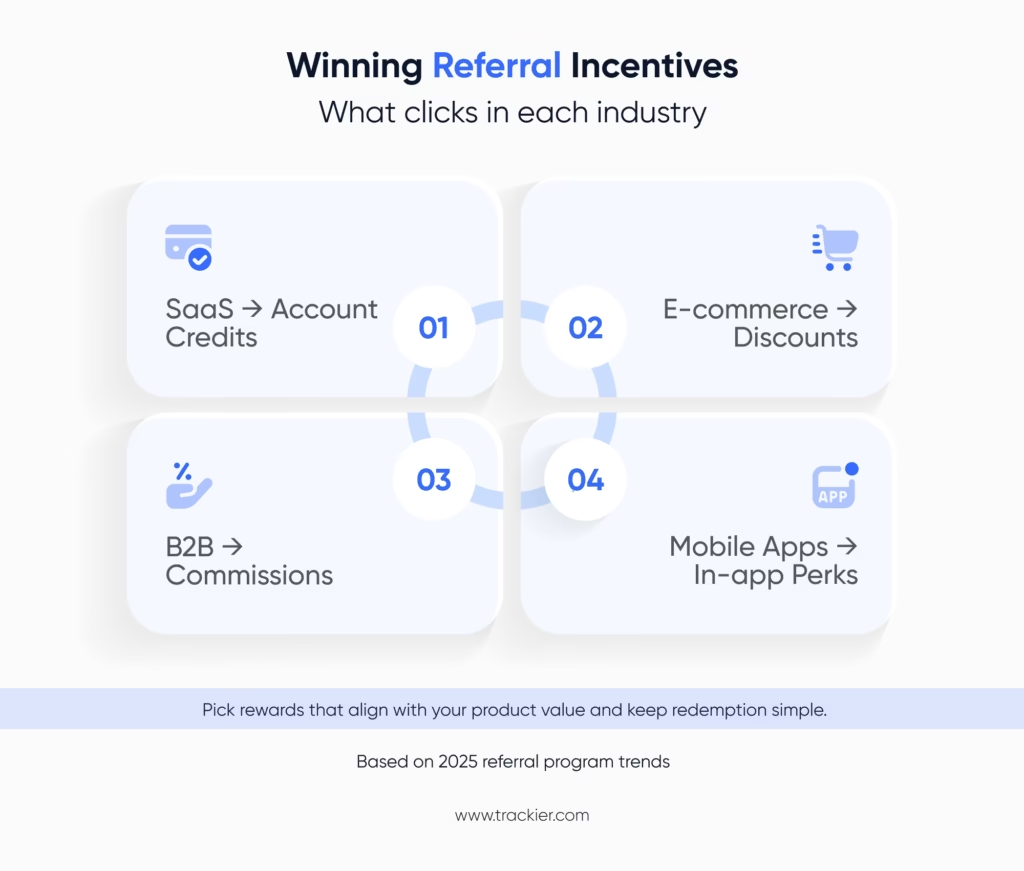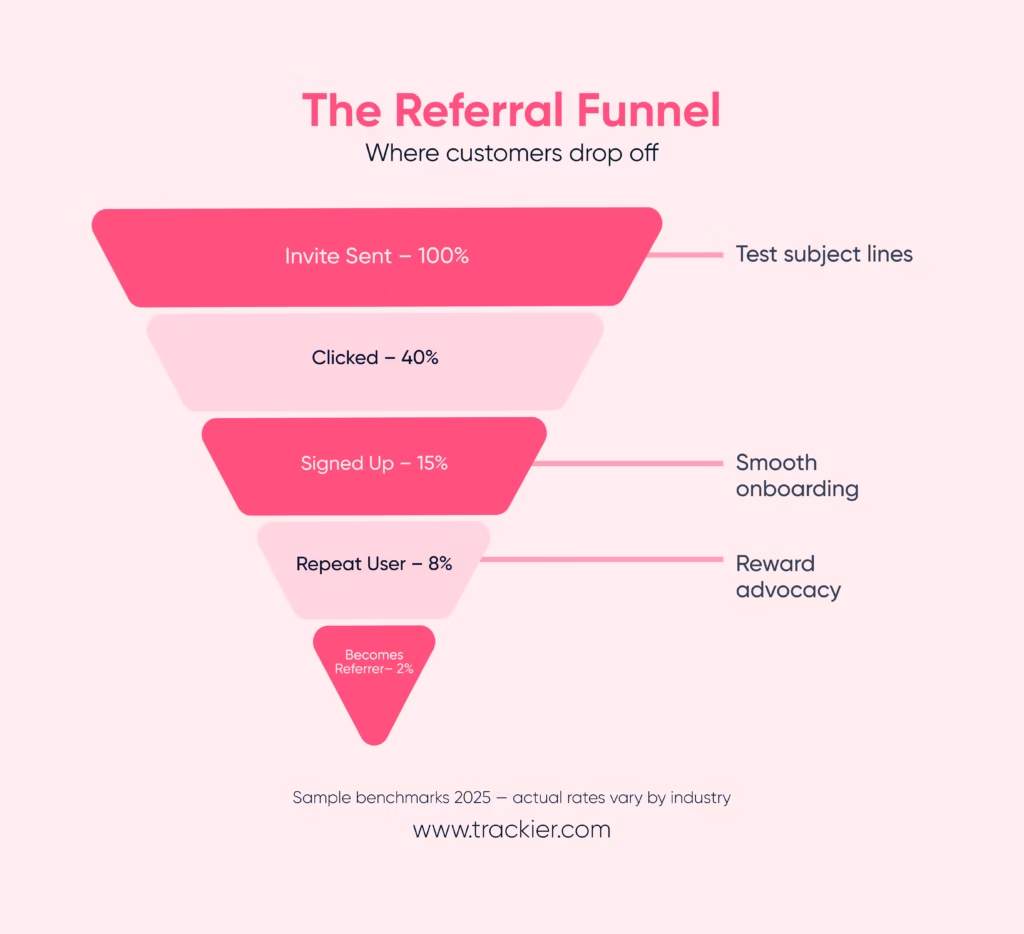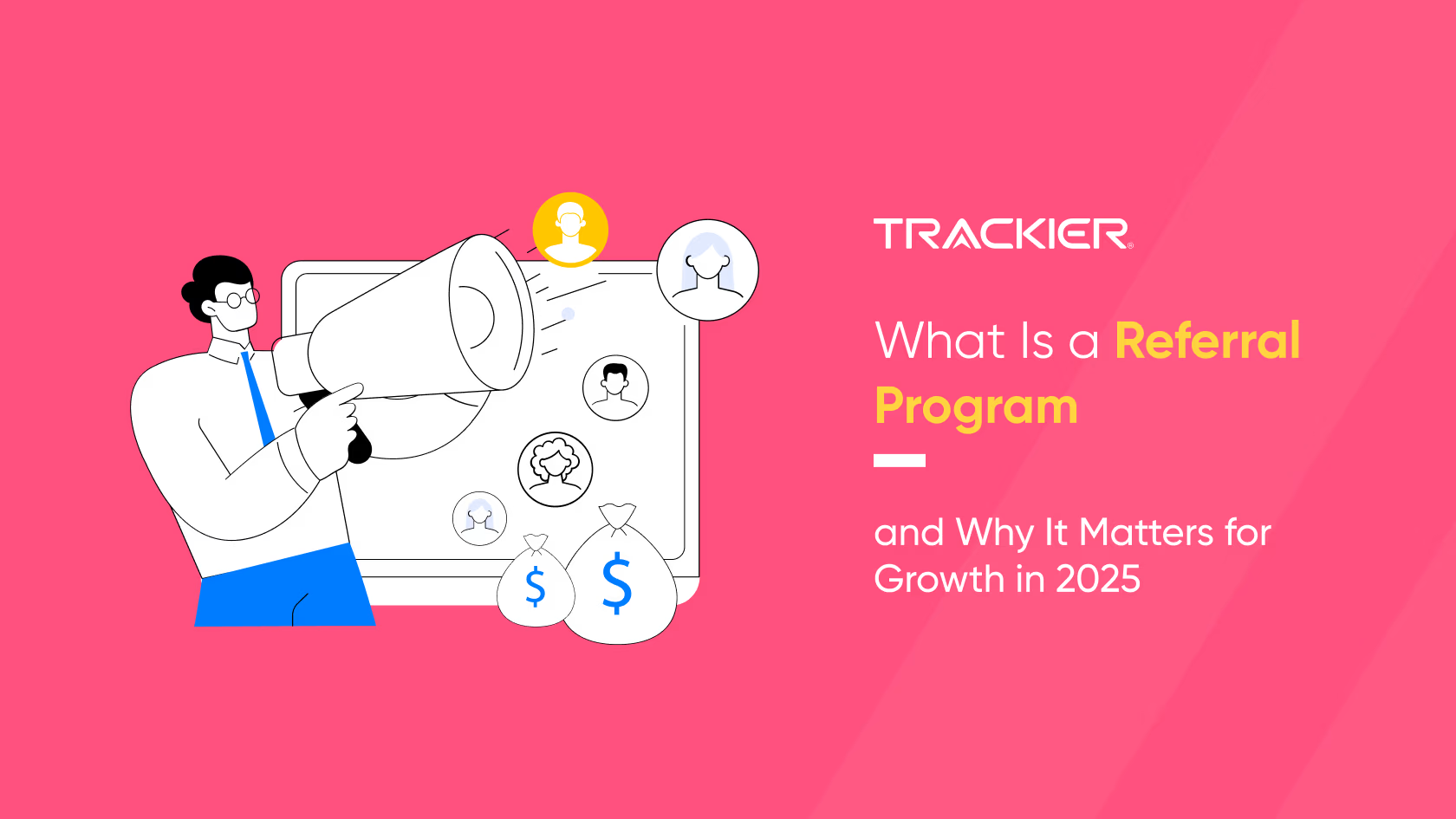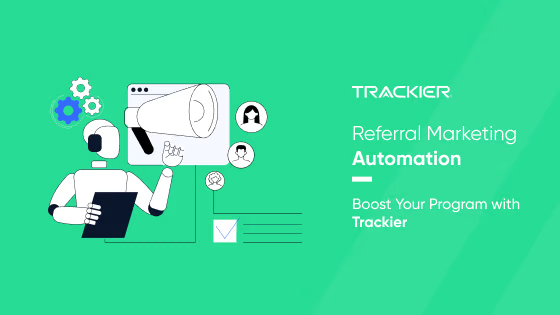A referral program is one of the simplest yet most effective ways to grow in a market where customer acquisition costs keep climbing. Instead of spending heavily on ads, businesses can let satisfied customers do the talking. A well-designed referral program turns loyal users into brand advocates who bring in new customers through trust-driven recommendations.
This shift matters more than ever in 2025. Traditional channels like display ads and paid search are getting crowded and expensive, while organic reach is shrinking. Referral programs stand out because they are powered by authentic advocacy, not algorithms. They give companies a way to build credibility, scale acquisition, and reward customers at the same time.
Why Referral Marketing Matters
The biggest advantage of a referral program is trust. People are far more likely to try a product or service when it comes recommended by someone they know. Studies consistently show that referred customers convert faster, stay longer, and deliver higher lifetime value compared to those acquired through paid campaigns.
Referral programs also create a compounding effect. A new customer brought in through a referral can become a referrer themselves, creating a self-sustaining growth loop. Over time, this reduces reliance on ad spend and builds a more engaged customer base. For brands looking to balance acquisition with retention, referral marketing delivers both.
Trends in Referral Marketing in 2025
Referral marketing in 2025 look sharper than ever. Buyers expect rewards that feel worth their effort, the ability to share instantly on mobile, and clarity around what they will get. Marketers, on the other hand, want measurable ROI and integrations with the rest of their stack. Here’s what recent data shows.
Personalized rewards lift participation
Consumers won’t bother with weak incentives. According to reports, buyers expect referral rewards to be worth around 11% off their purchase or roughly $21 in value. Yet, many programs still undervalue rewards, which limits participation. Companies that benchmark rewards against effort see stronger advocacy and fewer drop-offs.
Mobile and social sharing drive flow
Shoppers no longer want clunky referral steps. Shopify highlights that the most effective programs in 2025 lean on friction-free mobile sharing and time-boxed incentives like “Refer a friend this week for $15 off.” These tactics reduce decision delays and push faster peer-to-peer sharing across social platforms.
B2B buyers rely on peers
Ad-saturated buyers have grown immune to generic outreach. In fact, 91% of B2B buyers prefer to research solutions through peer recommendations before engaging with a vendor. This trend reinforces the need for structured referral programs to support sales teams in long buying cycles.
Benchmarks help set expectations
Marketers often ask, “What’s a good referral rate?” Data indicates that the average referral program contribution at 2.35% of sales for established retailers. This figure gives teams a realistic baseline to model impact instead of overestimating outcomes.
Program design connects with lifecycle marketing
Good referral programs thrive when integrated with owned marketing. Klaviyo emphasizes combining referrals with post-purchase flows, loyalty updates, and lifecycle campaigns. This makes referrals feel like a natural extension of customer engagement, not a bolted-on side campaign.
Why this matters
The data is clear. Referral programs are most effective when they provide customers with valuable rewards, sit inside existing lifecycle marketing, and are measured against reliable benchmarks.

Benefits of a Referral Program
When done right, a referral program becomes a powerful acquisition and retention lever. It goes beyond just pulling in new customers and creates sustainable long-term growth.
Conversion efficiency
Recommendations remain the most trusted channel. Reports state that 92% of buyers trust referrals from people they know. Similarly, data shows referral programs can contribute around 2–3% of overall sales volume for established retailers. Together, these stats help marketers replace guesswork with benchmarks when estimating upside.
Acquisition cost and ROI
Paid ads get more expensive every year. Shopify’s referral program data highlights that referral programs provide predictable and capped acquisition costs through fixed-value rewards like credits or gift cards. Instead of bidding endlessly in auctions, marketers can budget referrals as a steady acquisition channel with clearer ROI.
Retention and lifetime value
Loyal customers drive profit. Data aggregated by Semrush shows that existing customers are 50% more likely to try new products and spend 31% more compared to new customers. A referral program that rewards both advocates and their friends compounds this effect by feeding retention loops, not just new sign-ups.
Program reliability in B2B
For B2B companies, referrals are not a side benefit but a trust accelerator. Reports finds that 65% of new business in B2B comes from referrals and recommendations. This means referral-sourced opportunities often move faster through the pipeline and close with fewer objections.
Real program examples
Shopify’s case library shows dual-sided reward models performing best. A common setup is: “Referrer earns a $20 credit, and the referred friend gets $20 off their first order.” This symmetry doubles motivation and ensures advocacy doesn’t feel one-sided, which supports repeat referrals.
A referral program trims acquisition costs, drives predictable conversions, and strengthens customer lifetime value. When treated as a core acquisition channel, not a side project, it becomes one of the most sustainable growth levers for 2025.

How Trackier Adds Value to Referral Program Tracking
While referral programs deliver proven ROI, tracking and managing them across multiple channels is often challenging. This is where Trackier’s partner marketing platform plays a crucial role.
1. Unified Tracking Across Channels
Referral activities may happen on websites, mobile apps, or through affiliate partnerships. Trackier enables businesses to track all referral-driven conversions under a single dashboard, ensuring no attribution gaps.
2. Fraud Prevention and Security
Referral fraud is a real risk, from fake signups to self-referrals. With Trackier’s advanced fraud detection, brands can filter invalid leads and maintain the integrity of their referral program. This ensures that only genuine referrals are rewarded, preserving ROI.
3. Scalable Partner and Referral Management
Referral programs rarely exist in silos. Many businesses run affiliate, influencer, and referral partner program alongside them. Trackier allows marketers to unify these channels, measure performance holistically, and scale programs without complexity.
4. Real-Time Analytics for Smarter Optimization
With Trackier, businesses gain access to detailed metrics such as conversion rates, customer lifetime value, and partner-level performance. This allows marketers to identify top referrers, optimize campaigns in real-time, and double down on strategies that actually drive growth.
5. Compliance Made Easier
In industries like telecom, finance, and gaming, regulatory compliance can make or break referral strategies. Trackier provides compliance-focused tools that help brands stay within guidelines while scaling their referral and referral partner program globally.
By combining a referral program’s organic trust with Trackier’s ability to measure, protect, and optimize, businesses can transform referrals from a side tactic into a scalable growth engine.
Referral Program Best Practices
1. Keep the Referral Process Simple
Complex referral flows discourage participation. Programs that maintain a streamlined, three-step referral experience see up to 60% more participation compared to those with convoluted setups. One standout example is Airbnb. All it took was sharing a link.
Both parties earned credits toward future stays, minimizing friction and maximizing motivation. That clean process helped Airbnb unlock explosive regional adoption, driving roughly 300% year-on-year growth in some markets. Keep it intuitive, make the incentive clear, and let users act fast.
2. Offer Dual-Sided Rewards
When both the referrer and the referred benefit, referral rates climb. Programs with shared incentives can yield around 36% higher conversions. Dropbox capitalized on this by granting bonus storage to both parties. That mutual reward not only felt fair but also fueled adoption. Within 15 months, Dropbox gained around 3.9 million users primarily through this referral model.
3. Align Rewards with Customer Motivation
Generic incentives fall flat. When rewards match what your users genuinely value, referral engagement rises by about 25% compared to flat-offer models. Think beyond money. Tesla did just that.
Instead of cash, they offered early access perks and once-in-a-lifetime experiences like winning a Roadster. That exclusivity-driven value spoke directly to their community and delivered an estimated 40× return on their referral campaigns.
4. Promote the Program Everywhere
Even a great referral program fails if nobody sees it. Emails promoting referrals enjoy around 4× higher open rates compared to standard campaigns. Uber leveraged this by embedding their referral option directly in the app. Users saw the prompt at key moments and with both riders rewarded, it delivered up to 12× ROI during the early growth phase.
5. Track and Optimize Continuously
Referral campaigns shouldn’t be static. With A/B testing, you can experiment with elements like messaging, rewards, and positioning. Some optimizations result in meaningful lifts in referrals and conversions. For instance, Evernote refined its referral prompt through iterative testing and scaled to 100 million users in under five years with referrals as a pillar of its strategy.
Advanced Referral Program Strategies
1. Use Referrals to Reduce Churn
Referral-sourced customers tend to stick around longer, boosting retention. Research shows referred users are about 18% more loyal, and they bring around 16% higher lifetime value than others. ClassPass took this insight to heart. By offering free credits to both referrer and referee, they not only spurred sign-ups but helped reduce churn in a competitive market.
2. Track LTV vs. CAC to Optimize ROI
Referral marketing must balance upfront cost against long-term value. Word-of-mouth referrals deliver 37% higher retention, according to one study, significantly improving ROI. That paid off big for PayPal. Though they paid up to $60 per referral early on, these users brought strong retention and engagement, which helped grow the platform to over 100 million active accounts.
3. Expand Across Multiple Channels
Channel diversity matters. Referrals promoted across three or more platforms like SMS, social, email, see a 90% increase in participation. Community data shows around 68% of Gen Z are more likely to try a product shared by friends on social media. Revolut gained explosive gains by embedding referrals across push notifications, in-app banners, and email. That omnichannel strategy helped them scale swiftly to over 20 million users globally.
4. Segment Rewards by Customer Tier
Segmented incentives engage differently based on customer behavior. Tailored offers can boost referral conversion rates by around 22%, and personalize offers show up to 70% better engagement. Sephora did this well. Their Beauty Insider loyalty tiers recieved different referral perks, points for regular users, exclusive perks for VIP customers, leading to higher program adoption and deeper brand value.
5. Automate, Test, and Optimize
Referral programs that rely on constant optimization perform best. With A/B testing, you can rework messaging, reward size, or placement to improve conversion, sometimes by up to 40%. Dropbox repeatedly tested different reward sizes and discovered slightly higher bonuses drove 60% more successful referrals. Building in automation and fraud checks ensures that these improvements scale efficiently without manual bottlenecks.

Next Steps
Referral programs are no longer a side experiment for marketers. They have proven to be one of the most cost-efficient ways to acquire and retain customers when built with strategy and supported by technology.
- Cost-effectiveness: Referred customers are 4x more likely to convert than non-referred customers.
- Loyalty impact: Customers gained through a referral show a 16% higher lifetime value.
- Growth potential: Brands like PayPal and Dropbox scaled into millions of users through structured referral programs, showing how powerful the model can be when incentives and tracking are aligned.
The opportunity for marketers is clear. Instead of competing purely on ad spend, referral programs let your happiest customers bring in new ones while strengthening retention.
What to Do Next
Here is a practical roadmap for marketers who want to better their referral marketing efforts:
1. Audit your current program
- Are incentives compelling enough?
- Do you track both acquisition and retention from referrals?
2. Define measurable goals
- Target metrics like referral conversion rate, CAC vs. LTV, churn rate of referred customers.
3. Integrate tracking and automation
- Tools like Trackier centralize referral and partner data, helping you identify what channels and incentives work best.
4. Experiment and optimize continuously
- A/B test referral messages and rewards.
- Monitor fraud prevention so ROI stays intact.
5. Scale across channels
- Don’t restrict referrals to email. Expand to SMS, in-app, and social platforms to reach wider audiences.
Final Takeaway
Good referral programs succeed when they move beyond being just a one-time growth tactic. They should be treated as a long-term, data-driven acquisition and retention strategy. By combining the right incentives with robust tracking and continuous testing, marketers can transform referrals into a scalable, revenue-generating channel.
With platforms like Trackier, the process becomes measurable, fraud-proof, and scalable. This ensures that every referral is not only attributed correctly but also contributes directly to sustained business growth.
Hungry For More?
Sign up for our weekly newsletter to get tips like these delivered, straight to your feed.
FAQs
1. What is a referral program?
A referral program is a structured system where businesses encourage their existing customers or partners to bring in new customers. In return, the referrer usually earns a reward such as discounts, credits, or cash incentives. Unlike general word-of-mouth, referral programs are measurable and trackable, which means businesses can clearly see how many new customers are joining through referrals and what the ROI looks like.
2. How is a referral marketing different from affiliate marketing?
While both referral and affiliate programs involve third parties driving new customers, the difference lies in who participates and how incentives are structured.
– Referral programs and referral marketing are typically driven by existing customers who share the product with friends or peers. Rewards are usually consumer-focused, like credits or discounts.
– Affiliate marketing involves professional partners or publishers promoting the product to their audience. They often earn a commission for each sale or lead.
A business can run both models simultaneously, but the goals and strategies differ. Referral programs focus more on trust and loyalty, while affiliate programs lean toward reach and scale.
3. Do referral programs actually work?
Yes, referral programs are proven to work when built strategically. Data shows:
– Referred customers are 4x more likely to convert than non-referred ones.
– They also show a 16% higher lifetime value compared to non-referred customers (Harvard Business Review).
Well-designed referral programs reduce acquisition costs, drive higher engagement, and strengthen brand loyalty.
4. What makes a referral program successful?
A referral program succeeds when three factors align:
1. Clear incentives: Rewards must be valuable enough for customers to share.
2. Seamless experience: The referral process should be simple, with minimal steps.
3. Accurate tracking: Businesses need reliable platforms to attribute referrals correctly and prevent fraud.
Platforms like Trackier help businesses track referral traffic alongside other partner channels, ensuring attribution and ROI measurement are accurate.
5. Can small businesses run referral programs?
Absolutely. Referral programs are highly scalable and cost-efficient, making them perfect for small businesses. Even without large marketing budgets, a well-designed program can turn happy customers into the most effective growth channel. Starting simple, like offering a discount on the next purchase for both referrer and referee, can deliver measurable results.
6. How do I measure the success of my referral program?
The success of a referral program can be measured through key metrics such as:
– Referral conversion rate: Percentage of referrals that turn into customers.
– Customer Acquisition Cost (CAC) vs. Lifetime Value (LTV): Whether referred customers generate higher profitability.
– Churn rate of referred customers: Do referred customers stay longer than others?
– ROI of referral incentives: How much revenue is being generated compared to rewards given.
These metrics provide a clear picture of whether the program is driving sustainable growth.



